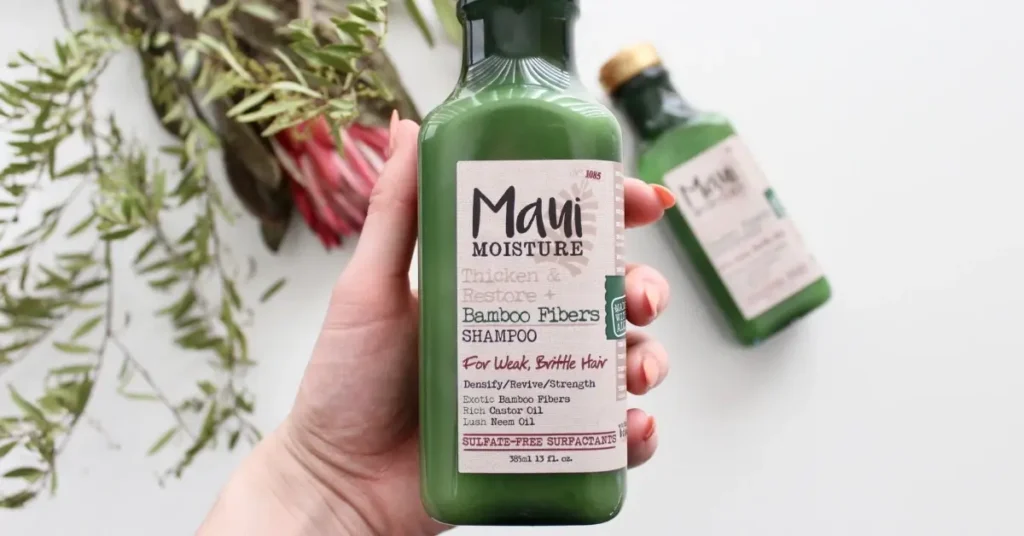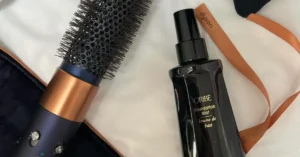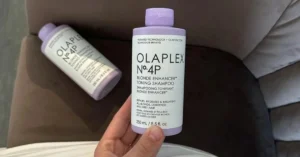Get ready to confront the ongoing struggle with a persistent foe called folliculitis. This widespread skin issue occurs when hair follicles become inflamed, a result of excessive oil buildup and the accumulation of dead skin cells. And the outcome?
A relentless assault of bumpy, red, and even pus-filled lesions that wreak havoc on your confidence. But fear not, for there is a formidable weapon at your disposal: Salicylic Acid.
The esteemed hero of skincare products possesses an unparalleled power in the battle against folliculitis. As a beta-hydroxy acid (BHA), it utilizes its remarkable oil-soluble properties, delving deep into our pores.
Within those depths, it expertly coordinates a series of actions, unclogging hair follicles and regulating the troublesome oil production responsible for this skin condition.
Table of Contents
Salicylic Acid for Folliculitis
But the magic of salicylic acid doesn’t end there. It excels as a virtuoso in skin healing and exfoliation, skillfully overseeing the process of cell turnover. With finesse, it eliminates dead skin cells and soothes inflammation.
With this formidable ally on our side, we reclaim our well-being and confidence, ready to face the world once again. No longer shall we carry the burden of unsightly and uncomfortable bumps that have plagued us. The time has come to seize control and bid farewell to folliculitis.
However, let us not overlook the wisdom of seeking guidance amidst our enthusiasm. Every skin is unique, an individual realm to be respected. Before embarking on the journey towards healthier skin, it is wise to consult a dermatologist.
This is particularly important if you bear the weight of a sensitive or persistent skin condition. By following their expert advice, we ensure a path that is both safe and effective.
Salicylic Acid Overview
Folliculitis can be a pesky problem, but we’ve got your back. In this section, we’ll take a closer look at salicylic acid, an ingredient that has gained a reputation as a go-to solution for many skin conditions like acne. We will explore its properties and understand why it is so effective.
Properties

Salicylic acid is a type of beta-hydroxy acid (BHA), which is oil-soluble and can penetrate deep into the skin. Its primary function is to break down the bonds between skin cells, making it an effective exfoliator for removing dead skin and unclogging pores.
Consequently, salicylic acid plays a crucial role in treating a variety of skin conditions, including acne, psoriasis, and seborrheic dermatitis.
When it comes to treating folliculitis, the compound works by softening keratin, a protein that forms part of the skin structure. This helps to loosen dry, scaly skin, making it easier to remove and allowing the skin to heal more effectively.
In addition to its exfoliating properties, salicylic acid is known for its ability to regulate oil production and encourage skin healing. Its anti-inflammatory properties also make it effective in reducing redness and irritation caused by various skin conditions.
To summarize, salicylic acid provides multiple benefits for those suffering from folliculitis, thanks to its unique properties. It works by breaking down dead skin cells, unclogging pores, softening keratin, and reducing inflammation.
With these characteristics, salicylic acid becomes a valuable ally in the fight against folliculitis.
Folliculitis Overview
Are you tired of those pesky, inflamed bumps on your skin? It’s time we talk about folliculitis! In this section, let’s dive into what causes folliculitis, its symptoms, and the different types you might encounter.
Causes
Folliculitis occurs when hair follicles become inflamed, often due to an infection with bacteria. Things that can contribute to folliculitis include:
- Friction from tight clothing or shaving
- Heat and sweat, often from exercise or wearing non-breathable fabrics
- Damaged hair follicles caused by chemicals or waxing
- Blockage from skin products, such as lotions and creams
Symptoms
So, how do you know if you’re dealing with folliculitis? Here are some common symptoms to watch out for:
- Small, red, or pus-filled bumps around hair follicles
- Itchy, sore, or tender skin
- Swelling and inflammation
- Possible scarring or hair loss in severe cases
Types of Folliculitis
There are several types of folliculitis, ranging from mild to severe. Some of the most common include:
- Hot Tub Folliculitis: Also known as pseudomonas folliculitis, is a specific type of rash characterized by round and itchy bumps. This condition is caused by pseudomonas bacteria, commonly found in hot tubs, water slides, and heated pools with improper chlorine and pH levels
- Bacterial folliculitis: is a prevalent skin condition characterized by itchy, pus-filled bumps. It occurs when hair follicles become infected with the bacteria Staphylococcus aureus. Staph bacteria naturally reside on the skin, but they can lead to issues when they enter the body through cuts or wounds.
- Pityrosporum folliculitis: happens when yeast enters hair follicles, causing an acne-like rash. It occurs due to triggers like tight clothes, humid weather, oily skin, greasy products, stress, and diabetes.
Now that we know what’s causing those irritating bumps, it’s time to take action and overcome folliculitis!
Role of Salicylic Acid in Treating Folliculitis

If you’re struggling with folliculitis, you’ve come to the right place! We’ve got you covered on how salicylic acid can effectively help you treat folliculitis and regain your confidence.
Mechanism of Action
To understand the power of salicylic acid, it’s crucial to know its mechanism of action. Salicylic acid is a widely used ingredient in various skincare products and has been utilized for over 2,000 years to treat many skin conditions.
What makes this particular ingredient so effective is its ability to exfoliate the stratum corneum, which assists in peeling and unclogging pores.
Its comedolytic property, in particular, enables salicylic acid to act as an excellent peeling agent for people with acne-prone skin. The acid removes excess oil and reduces inflammation, which is crucial in the treatment of folliculitis.
The glycolic acid and salicylic acid combination not only unclogs pores but also regulates oil production, which fosters skin healing. The addition of green tea extract further calms and soothes the affected area, diminishing redness and inflammation due to blemishes.
In treating folliculitis, chemical exfoliants like salicylic acid or glycolic acid can play a vital role in improving the condition of your skin. However, it’s essential to consult your healthcare provider for a proper diagnosis and customized course of treatment to ensure the most effective results.
Remember that when dealing with salicylic acid folliculitis, the proper application of the acid in conjunction with a comprehensive skincare regimen will help you achieve healthier and clearer skin in no time.
Salicylic Acid Products for Folliculitis
Are you tired of dealing with those pesky, inflamed hair follicles? Don’t worry, we’ve been there too, and we can help. We discovered that salicylic treatments are highly effective in tackling this issue. Let’s dive into the different products available, so you can choose the one that suits your needs the best.
Topical Solutions
Gels and creams containing salicylic acid can effectively unclog pores and reduce inflammation caused by folliculitis. We found the Replenix Gly Sal 10/2 Cleanser to be a powerful solution with its combination of glycolic acid and salicylic acid. This formula helps in removing oil, unclogging pores, and regulating oil production for healing the skin.
Shampoos and Washes

Another way to tackle salicylic acid folliculitis is by using specially formulated shampoos and body washes. We’ve tried a few, and these are our favorites:
- CLN Scalp Shampoo: Great for severe folliculitis, this shampoo contains both salicylic acid and sodium hypochlorite. It helped relieve our scalp irritation and inflammation. You can find more about this product on Hair Everyday Review.
- Nizoral Anti-Dandruff Shampoo: For folliculitis accompanied by flaky buildup, Nizoral’s 1% ketoconazole formulation worked wonders on our affected areas. It reduced itching, redness, and flaking significantly.
- AROMATICA Cypress Deep Cleansing Shampoo: This shampoo gently cleanses the scalp and removes excess oil, making it an excellent choice for mild to moderate folliculitis cases.
Remember, it’s essential to choose a product that caters to your specific needs. With the right salicylic acid folliculitis treatment, you can successfully clear your skin and regain your confidence. Good luck on your journey to healthier skin!
Top 10 Ways to Beat Folliculitis
Are you tired of suffering from irritating bumps and inflammation due to folliculitis? We’ve got your back! In our quest to find a solution, we discovered that salicylic acid folliculitis treatments have been a game-changer.
Here are the top 10 ways that helped us conquer folliculitis and can help you too.
- Over-the-counter salicylic acid products: Using a body wash or spot treatment containing salicylic acid has been highly effective for us in clearing folliculitis. This chemical exfoliant penetrates deep into the follicles and unclogs them.
- Warm compresses: Applying a warm, moist cloth to the affected area multiple times a day alleviates pain and helps to reduce inflammation.
- Antibacterial soaps: Incorporating antibacterial soaps into our daily hygiene routine has significantly decreased the frequency of flare-ups.
- Loose-fitting clothing: Wearing breathable, loose-fitting garments, made from natural fibers, allows our skin to breathe and reduces friction.
- Gentle exfoliation: Regularly exfoliating the skin with a gentle scrub or brush helps remove dead cells and debris from follicles, lowering the chances of inflammation.
- Avoiding shaving: Whenever possible, we skip shaving the affected areas to prevent further irritation and allow the skin time to heal.
- Using a clean towel: We make sure to always dry ourselves with clean towels and avoid sharing them with others to minimize the spread of bacteria.
- Moisturizing daily: Maintaining well-hydrated skin by applying a fragrance-free moisturizer daily has improved our skin’s overall health and resilience.
- Avoiding occlusive products: We’ve learned to stay away from products containing ingredients like petrolatum and dimethicone, which can potentially clog hair follicles and exacerbate the problem.
- Seeking professional help: Finally, if you experience persistent or worsening symptoms, it’s essential to consult a dermatologist who can recommend the right treatment plan.
Incorporating these strategies into our daily routines has dramatically improved our battle against folliculitis. Give them a try and regain control over your skin!
Side Effects and Cautions
but i forgot that it contained salicylic acid that actually has side effects of leaving your skin dry after(?), hence my skin become dry and crusty 💔
— ㅠㅠ (@meganscallion) February 8, 2022
Salicylic acid folliculitis treatment can be a game-changer in addressing those pesky, inflamed hair follicles. However, it’s crucial to be aware of the potential side effects and take necessary precautions while using salicylic acid for folliculitis.
In this section, we’ll discuss two common issues to be mindful of: Skin Irritation and Allergic Reactions.
Skin Irritation
Salicylic acid is a potent ingredient, and some individuals may experience skin irritation as a side effect. To avoid this, we recommend starting with a lower concentration of salicylic acid and gradually increasing it as your skin becomes accustomed.
Common symptoms of skin irritation may include redness, dryness, or peeling. If you notice these symptoms, limit the usage frequency or discontinue the product and consult with your doctor.
Allergic Reactions
Though rare, salicylic acid can sometimes cause allergic reactions in certain individuals. Signs of an allergic reaction can include hives, itching, trouble breathing, swelling of the eyes, face, lips, tongue, tightness in the throat, or feeling faint.
If you experience any of these symptoms while using a salicylic acid product, stop using it immediately and seek medical attention.
Ultimately, when it comes to treating salicylic acid folliculitis, one must exercise caution and pay close attention to their skin’s response. By being aware of the potential side effects and taking necessary precautions, a salicylic acid treatment can be an effective solution for managing folliculitis.
Alternative Treatments for Folliculitis
Are you tired of battling with salicylic acid folliculitis, and ready for a change in your treatment plan? Look no further, as we explore some alternative treatments that can help combat this persistent skin condition. So, let’s dive right into two of the most promising alternative treatments: Benzoyl Peroxide and Light Therapy.
Benzoyl Peroxide
Benzoyl peroxide is a popular ingredient in many acne treatments and can also be effective in treating folliculitis. It works by killing bacteria, reducing inflammation, and clearing clogged hair follicles, making it a suitable alternative to salicylic acid.
To use benzoyl peroxide for folliculitis, consider incorporating products containing this ingredient into your skincare routine. Here are some options to consider:
- Cleansers: Find a gentle benzoyl peroxide cleanser that will remove dirt and oil from your skin while treating the infected hair follicles.
- Topical treatments: Opt for a spot treatment containing benzoyl peroxide that targets specific areas of inflammation.
- Leave-on lotions: These will allow for a more prolonged exposure to the ingredient, which can help improve results.
Remember to follow the instructions on the packaging and consult a dermatologist before starting any new treatment.
Light Therapy
Light therapy, specifically blue and red light, has shown potential in treating various skin conditions, including folliculitis. This treatment uses LED lights to emit specific wavelengths that help kill bacteria, reduce inflammation, and promote healing.
To get started with light therapy, you can visit a dermatologist or invest in an at-home device. Keep in mind that consistency is key for optimal results, so make sure to follow a regular treatment schedule, as recommended by a professional.
In conclusion, while salicylic acid is a common treatment for folliculitis, it might not be the best fit for everyone. Alternative treatments like benzoyl peroxide and light therapy can offer relief and help clear up your skin.
Whichever method you choose, always consult a dermatologist to ensure it’s the right fit for your unique needs. Happy healing!
FAQ

Can I use salicylic acid on folliculitis?
Yes, salicylic acid can be used to treat folliculitis. Its exfoliating and anti-inflammatory properties help unclog hair follicles, reduce inflammation, and regulate oil production, making it a beneficial ingredient in addressing folliculitis and promoting healthier skin.
What worsens folliculitis?
Several factors can worsen folliculitis, including friction from tight clothing or shaving, excessive sweating, heat and humidity, compromised immune system, certain medications, and exposure to bacteria or fungi. Proper hygiene practices and avoiding triggers can help prevent exacerbation.
Why do I suddenly have folliculitis?
Sudden onset of folliculitis can be caused by various factors, including bacteria or fungi entering the hair follicles, irritants or chemicals, friction or trauma to the skin, compromised immune system, excessive sweating, or certain medications. Identifying the trigger can help prevent future occurrences.
Does moisturizing help folliculitis?
Moisturizing can be beneficial for folliculitis as it helps maintain skin barrier function and prevent dryness. However, it’s important to choose non-comedogenic, lightweight moisturizers to avoid clogging hair follicles.
What to do if folliculitis doesn’t go away?
If folliculitis doesn’t go away or keeps recurring despite self-care measures, it’s recommended to consult a dermatologist. They can provide a proper diagnosis, determine the underlying cause, and prescribe appropriate treatments such as topical or oral medications to address the persistent folliculitis effectively.
If you liked this blog article: Salicylic Acid for Folliculitis: Effective Treatment, don’t forget to leave us a comment down below to tell us about your experience.






